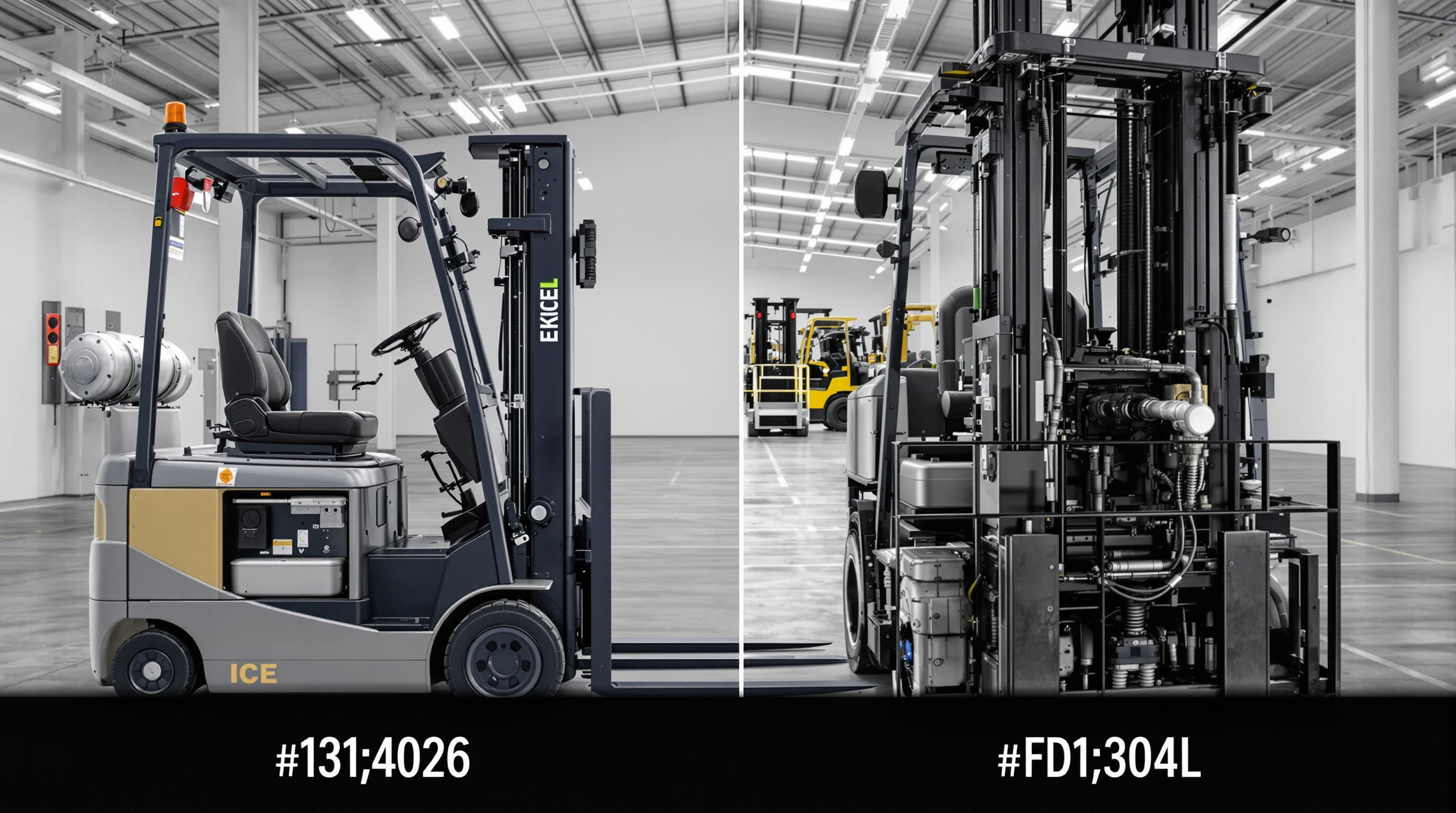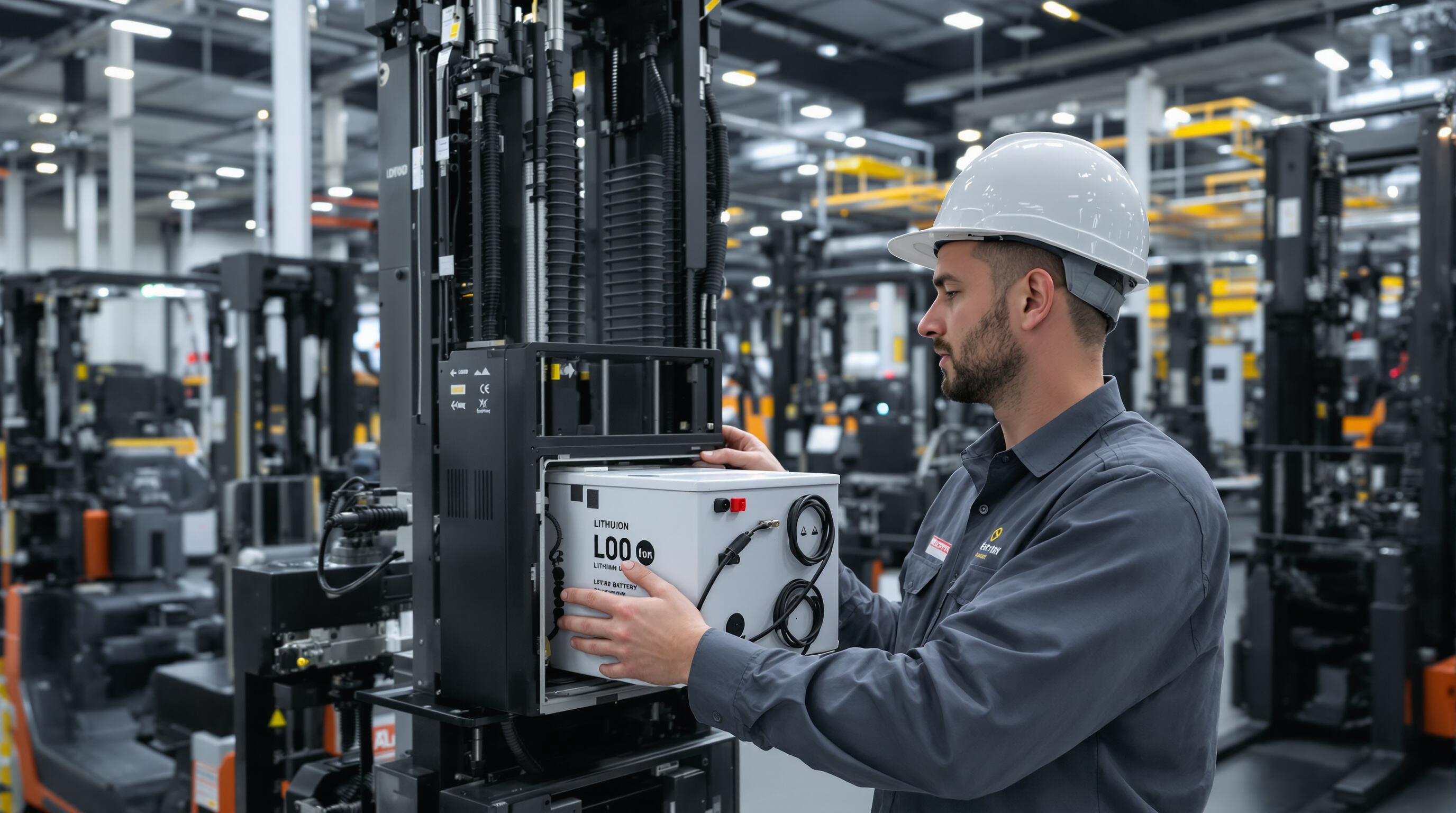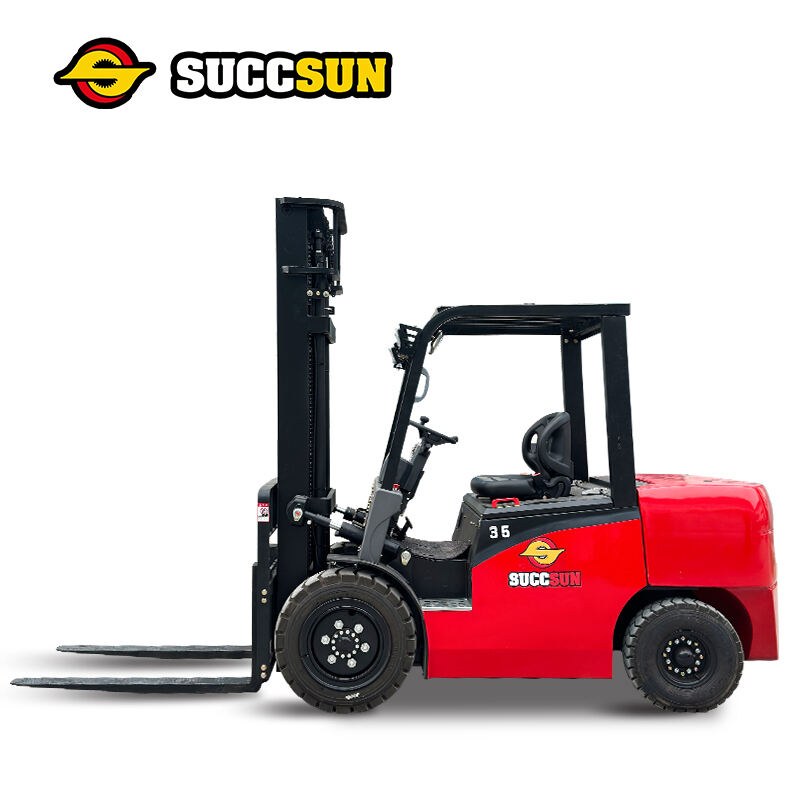Electric Forklifts vs. Internal Combustion Forklifts: Lower Operating and Maintenance Costs

Reduced Maintenance Needs Due to Fewer Moving Parts
Electric forklifts eliminate complex engine components such as fuel injectors, radiators, and exhaust systems, resulting in 50% fewer maintenance interventions compared to diesel or propane models (Industry Benchmark 2024). With fewer moving parts, operators benefit from:
- 70% lower lubrication requirements
- No need for spark plug or oil filter replacements
- Reduced risk of hydraulic leaks
This simplified design lowers annual upkeep costs by an average of $2,400 per unit and minimizes unplanned downtime in material handling operations.
Energy Cost Savings: Electricity vs. Diesel and Propane
Electric forklifts offer significant energy efficiency advantages, consuming $1.10 per hour in electricity versus $5.60/hour for diesel equivalents. Over a 2,000-hour work year:
| Electric | Diesel | |
|---|---|---|
| Annual Fuel Cost | $2,200 | $11,200 |
| EPA Emissions Compliance Fees | $0 | $3,850 |
The elimination of volatile fuel pricing and hazardous material handling fees allows for more predictable operating budgets.
Total Cost of Ownership: 5-Year Comparison of Electric and ICE Models
| Electric Forklift | ICE Forklift | |
|---|---|---|
| Purchase Price | $28,000 | $22,000 |
| Maintenance (5 yrs) | $6,000 | $18,000 |
| Energy/Fuel (5 yrs) | $11,000 | $56,000 |
| Resale Value | $8,400 | $3,300 |
| Total Net Cost | $36,600 | $92,700 |
Despite a higher initial investment, electric models deliver 60% lower lifetime costs, with return on investment typically achieved within 18–24 months.
Overcoming the Upfront Cost Barrier with Long-Term ROI
Although electric forklifts carry a 20–30% higher purchase price, tax incentives such as the Modified Accelerated Cost Recovery System (MACRS) allow for 50% first-year depreciation write-offs. Combined with 65% lower hourly operating costs, most operations recover the price premium within 5,000 operational hours.
Advancements in Battery Technology That Boost Uptime and Efficiency

Lithium-Ion Batteries: Faster Charging and Longer Lifespan
Today's electric forklifts are equipped with lithium ion batteries that last through around 5,000 charge cycles, which is roughly 40 percent better than what we see with old fashioned lead acid options. The real game changer though is how fast these new batteries can recharge. Most models will top up in just two hours flat, whereas older battery tech takes anywhere from eight to ten hours to get back online. That means warehouses don't have to worry about their equipment sitting idle waiting for power anymore. According to recent research from the Electric Vehicle Market Report released in early 2025, companies switching to this technology typically save on replacement costs for at least seven years straight while still getting about 90% of original battery performance out of them during that time frame.
Opportunity Charging and Its Impact on Continuous Operations
Partial "opportunity charging" during breaks or shift changes enables uninterrupted 24/7 warehouse operations. Operators report 18% productivity gains by eliminating 30-minute battery swaps. Advanced thermal management systems allow 15-minute charges to restore 50% capacity without degrading cell integrity, as validated by recent materials research.
Optimizing Charging Infrastructure for Maximum Fleet Efficiency
Strategically placed charging stations reduce deadhead travel by 22% in large facilities. Smart load-balancing systems prioritize charging for:
- High-utilization forklifts
- Batteries below 20% charge
- Night-shift equipment
This approach cuts energy waste by 19% compared to fixed charging schedules.
Real-World Performance: Battery Consistency Across Shifts
Third-party field tests show lithium-ion-powered forklifts maintain consistent torque and speed (<2% variance) even at 15% remaining charge. In contrast, lead-acid systems experience a 34% power drop in final operational hours, often requiring mid-shift interruptions.
Increased Operational Productivity in High-Demand Environments
Electric forklifts enhance productivity in intensive material handling environments through superior operational consistency.
Consistent Power Delivery for Faster Load Cycles
Electric forklifts keep their power all day long during those full 8 hour shifts, unlike traditional internal combustion engines which tend to lose strength as they run. The speed difference makes a big impact on warehouse operations. A recent study from MHEDA back in 2023 found that these electric models handled loads 22% quicker in cold storage facilities, especially when equipped with lithium ion batteries. What really stands out is how fast they respond right away. These machines can go from zero to eight miles per hour in just three point two seconds flat. Operators don't waste time waiting for engines to rev up like old gas powered lifts did, so they get more done throughout their shift.
Reducing Downtime and Labor Costs in Material Handling
The numbers tell a pretty clear story: electric forklifts need about 70% less regular maintenance compared to their diesel counterparts. The Department of Energy's 2024 report shows this difference clearly - just 10.4 versus 36 monthly labor hours spent on upkeep. With sealed electrical systems, there's no need for those annoying fuel filter replacements, costly oil disposal, or fixing problems related to emissions. This makes all the difference in places like food processing plants and pharmaceutical warehouses where even minor contamination issues can bring operations grinding to a halt. Take one logistics company in the Midwest as an example. After switching around two thirds of their equipment to electric forklifts and implementing some smart predictive maintenance techniques, they saw their labor expenses drop by nearly half. That kind of savings adds up fast when running a large warehouse operation.
Case Study: Efficiency Gains in a High-Throughput Distribution Center
One major auto parts supplier saw impressive results after swapping out 42 old propane powered forklifts for newer lithium ion models throughout their massive 1.2 million square foot warehouse space. Getting rid of thoseâmidday fuel stops alone freed up around 11.3 man hours every week, plus the new batteries could be swapped automatically so operations ran nonstop from Monday through Friday. The tighter turning radius on these electric lifts made a big difference too. Workers didn't have to backtrack as much in the tight storage areas, cutting down travel distance by nearly 20%. Each truck ended up saving about 41 extra miles worth of driving just moving around unnecessarily each week.
Environmental and Regulatory Advantages That Drive Hidden Savings
Zero Emissions Improve Indoor Air Quality and Reduce Ventilation Costs
Electric forklifts produce no exhaust emissions, reducing HVAC energy use by 18â22% in enclosed spaces according to material handling efficiency studies. Lower ventilation demands cut facility operating costs and support compliance with tightening OSHA air quality standards, creating safer indoor work environments.
Compliance with Emissions Regulations and Access to Incentives
Compliance with emissions regulations now offers dual financial benefits: avoiding an average of $740,000 in potential annual fines (EPA enforcement data 2023) and qualifying for tax credits covering 30% of EV infrastructure costs through 2032 under current U.S. climate policy.
Sustainability as a Cost-Saving Strategy: Lower Carbon Footprint, Higher ROI
Leading manufacturers report 9â12% operational cost reductions within three years of transitioning to electric fleets, driven by improved energy efficiency and reduced exposure to carbon pricing. These savings accelerate ROI timelines and align environmental goals with financial performance.
FAQ
What are the main maintenance benefits of electric forklifts?
Electric forklifts have fewer moving parts, eliminating the need for components such as fuel injectors and exhaust systems, resulting in 50% fewer maintenance interventions and significantly lower upkeep costs.
How do electric forklifts compare to diesel models in terms of energy costs?
Electric forklifts consume less energy, costing around $1.10 per hour compared to $5.60 for diesel, translating to substantial annual savings and more predictable budgets.
What is the total cost of ownership for electric vs. ICE forklifts over five years?
Despite a higher initial investment, electric forklifts have lower lifetime costs by about 60%, with rapid return on investment typically achieved within 18-24 months.
How do advancements in battery technology impact forklift efficiency?
Modern lithium-ion batteries offer faster charging and longer lifespans, facilitating uninterrupted warehouse operations and significant cost savings over several years.
What environmental advantages do electric forklifts provide?
Electric forklifts produce zero emissions, enhancing indoor air quality, lowering ventilation costs, and ensuring compliance with regulatory standards, thereby driving hidden financial savings.
Table of Contents
- Electric Forklifts vs. Internal Combustion Forklifts: Lower Operating and Maintenance Costs
- Advancements in Battery Technology That Boost Uptime and Efficiency
- Increased Operational Productivity in High-Demand Environments
- Environmental and Regulatory Advantages That Drive Hidden Savings
-
FAQ
- What are the main maintenance benefits of electric forklifts?
- How do electric forklifts compare to diesel models in terms of energy costs?
- What is the total cost of ownership for electric vs. ICE forklifts over five years?
- How do advancements in battery technology impact forklift efficiency?
- What environmental advantages do electric forklifts provide?


